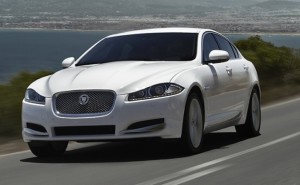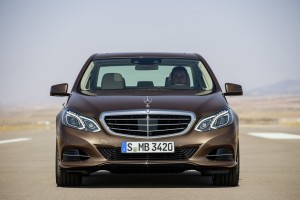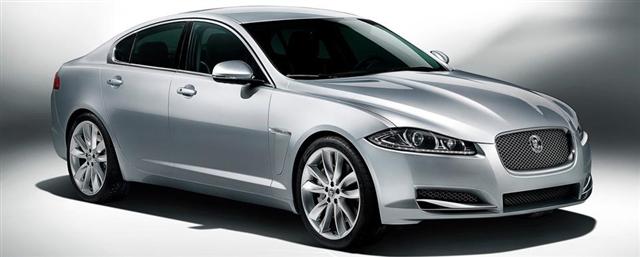Jaguar XF vs Mercedes E Class
What’s new?
MENTION GERMAN LUXURY car and we’re willing to bet the car that comes to mind first is the Mercedes. Benz E-class. It’s easy to see why. Mercedes was the first German luxury carmaker to come into India way back in 1996, and remained the only one here for more than the better part of a decade. And the very fact that Mercedes Benz has consistently brought in the latest-generation E-class to India almost as soon as it was introduced in Europe (apart from the very first model) speaks volumes about how important this car is to the company. Part of the reason for its success is the fact that Mercedes has always offered an entry-level diesel version that was more affordable than its bigger-engined brethren, making it that much more attractive.
‘Now Jaguar too has seen the merits of offering a smaller engine option. It’s why it recently introduced the four-cylinder XF 2.2 diesel in India. Because it is assembled locally, thereby attracting lower duties, it joins the XF lineup at 63.134, a comfortable 7.500 EUR below the 3.0-litre, six-cylinder XF-S diesel. We picked the Jag and the Merc for this test because they share one trait – they both focus on occupant comfort.
A couple of things are important here. Since they have relatively small engines, it is key that these two cars have enough power to not embarrass their owners when they accelerate away from traffic lights. They have to have enough grunt to feel effortless and, of course, they should be comfortable, as the owner is likely to spend time being chauffeur driven.
What are they like to drive?
 WITH 187BHP AND 45.8kgm of pulling power, the Jaguar’s engine is quite a bit gutsier than this Mercedes E 220 CDI’s 170bhp and 40.7kgm. And that’s not all – the XF’s engine is also smoother and quieter than the Merc’s diesel, and hence feels more effortless from the word go. Also in its favour is the eight-speed automatic gearbox, which has one more gear than the E-class’s seven-speed automatic.
WITH 187BHP AND 45.8kgm of pulling power, the Jaguar’s engine is quite a bit gutsier than this Mercedes E 220 CDI’s 170bhp and 40.7kgm. And that’s not all – the XF’s engine is also smoother and quieter than the Merc’s diesel, and hence feels more effortless from the word go. Also in its favour is the eight-speed automatic gearbox, which has one more gear than the E-class’s seven-speed automatic.
So, on the move, the XF actually leaps ahead like a proverbial jungle cat. Its 0-100kph time of 9.1sec betters the E 220 CDI’s 9.3sec time and the XF is better at pouncing into gaps in traffic as well. You might find it needs a firm push of the throttle pedal before it downshifts, but then again, you can get around this easily by tugging on the left shift paddle.
It’s not all rosy for the XF though. When you want to get away fast from a traffic light, there’s a noticeable delay between putting your foot down and the car actually lunging ahead. Still, this is but a small fly in the XF’s ointment.
The E-class moves off from a standstill more smartly, and the throttle response is more linear than the XF’s, making it more predictable when you’re manoeuvring in tight traffic. And, if you haven’t experienced the XF, you’ll be more than happy with the way it pulls. Its 0-100kph time is not very different from the XF’s, and neither are the in-gear acceleration times.
In fact, it’s only on the highway, when you need that extra burst of speed for an overtake that you notice the Merc’s lower power rating. Also, while the Merc’s engine is gruffer sounding than the XF’s, it’s not a tractor either. Still, it’s the Jaguar we would pick here thanks to that extra bit of refinement and effortlessness it has.
Ride & handling
 THE XF is a bit lumpy at low speeds, but the way it handles uneven surfaces once you pick up the pace is very impressive. One of the reasons for this is the high-profile tyres mounted on 17-inch rims, which act as the first line of defence against our warzone-like roads.
THE XF is a bit lumpy at low speeds, but the way it handles uneven surfaces once you pick up the pace is very impressive. One of the reasons for this is the high-profile tyres mounted on 17-inch rims, which act as the first line of defence against our warzone-like roads.
The E-class, in contrast, is stiffer and tends to toss you around a bit. However, it too has a fantastically stable and flat ride once you are at highway speeds.
It’s also the one that is more fun to drive. It changes direction willingly, the steering feels sharper, with better weight and feel than the Jaguar’s. This, combined with the frankly fantastic body control, makes it a better handler than the occasionally wallowy Jag.
The Jaguar XF is the easier one to drive in traffic. Its low dashboard makes it easier to see out the front and the lighter steering makes for easier twirling through tight turns.
What are they like inside?
 The generation of E-class is known for its tanklike build quality, but you’ll still be amazed by how well constructed it is. The doors shut with all the solidity of a bank vault and, once you’re inside, it’s like you’ve lowered the volume on the world outside. Then there’s the beautifully built interiors and the controls that work with reassuring solidity. The driving position is comfortable, and the driver’s seat even has electric lower back support adjustment (the XF doesn’t offer this). However, we didn’t like the confusing mass of buttons on the centre console, or the basic driver interface system and its very retro-looking graphics.
The generation of E-class is known for its tanklike build quality, but you’ll still be amazed by how well constructed it is. The doors shut with all the solidity of a bank vault and, once you’re inside, it’s like you’ve lowered the volume on the world outside. Then there’s the beautifully built interiors and the controls that work with reassuring solidity. The driving position is comfortable, and the driver’s seat even has electric lower back support adjustment (the XF doesn’t offer this). However, we didn’t like the confusing mass of buttons on the centre console, or the basic driver interface system and its very retro-looking graphics.
The XF, on the other hand, has a much brighter, simpler dashboard. The beige, silver and wood-finished cabin is a lot friendlier, but it doesn’t feel as solidly built as the E-class’s. We also like the touchscreen interface that controls everything from the audio system to the climate control and the navigation.
Moving back, it’s the E-class’s more spacious rear seats that we liked more. The cushioning is perfect, and there’s plenty of leg, head and shoulder room. Rear passengers even get additional goodies like separate temperature control for the rear air-con and sun-blinds for the windows.
The XF’s seat, though spacious enough and a brighter place to be than the E-class’s all black interiors, doesn’t have the legroom of the Merc.
The Jaguar does have more storage space than the Mercedes though. There are three big bins between the front seats and the door pockets are reasonably large as well.
The E-class fights back with a bigger, better-shaped boot. At 540 litres, you can squeeze in a lot more in here than in the XF.
Conclusion
THESE TWO CARS are very closely matched and it’s been quite a task picking a winner. Both are excellent at what they do – convincing their occupants that they are in a special car.
The E-class wows you with its tank-like build quality, its fantastically comfortable rear seats, its hushed interiors and all the safety features it comes loaded with. And we’re also impressed by how quick it is, despite its power -disadvantage. Seriously, if you haven’t been for a spin in the XF, you’ll be hard pressed to find fault with the way the E-class’s engine feels so competent.
Also, should you wish to drive hard, it is the one that will provide more thrills from behind the wheel. However, owners might not like the gruff engine note, or the fact that the stiffer ride negates the comfort that the rear seats offer to a certain extent. It is exactly here that the E-class loses valuable luxury points to the XF.
The Jaguar wins this test chiefly because it’s a bit more effortless, more refined and has the softer ride – things we believe are crucial attributes in a luxury car. It has the more up-to-date engine and gearbox as well, and it is the easier car to drive should you decide to take the wheel. Sure, it may not impart the same feeling of toughness as the E-class and it may not have as good a back seat, but the difference in these areas is marginal. Another important point is that the XF is also a far rarer sight on our roads than an E-class, giving it that little bit of exclusivity as well. It doesn’t have the widespread service backup that the Merc has, but Jaguar is working on it. Also, the XF is more expensive than the E 220 CDI by a small margin, but we think it feels special enough to justify the extra spend.

